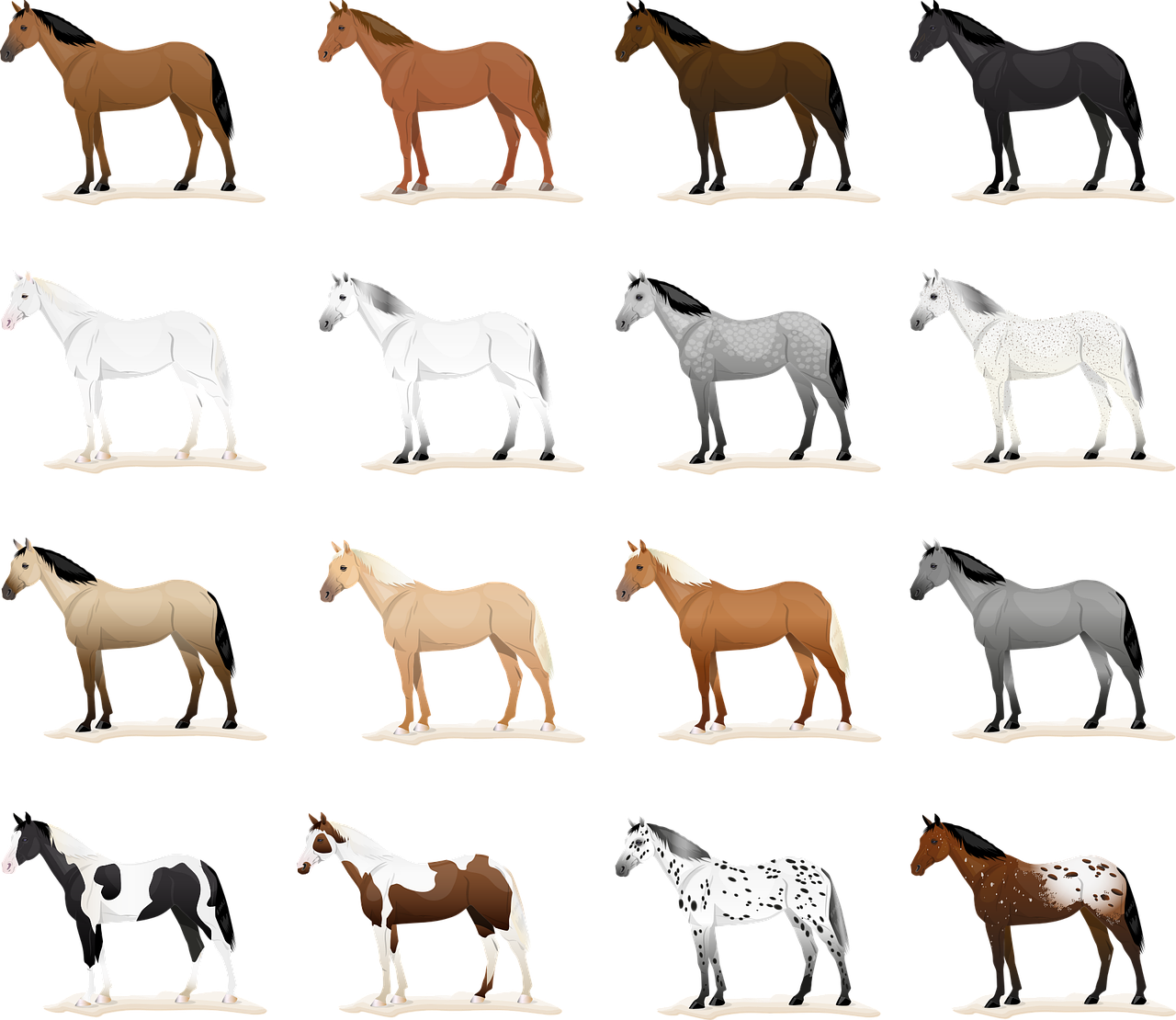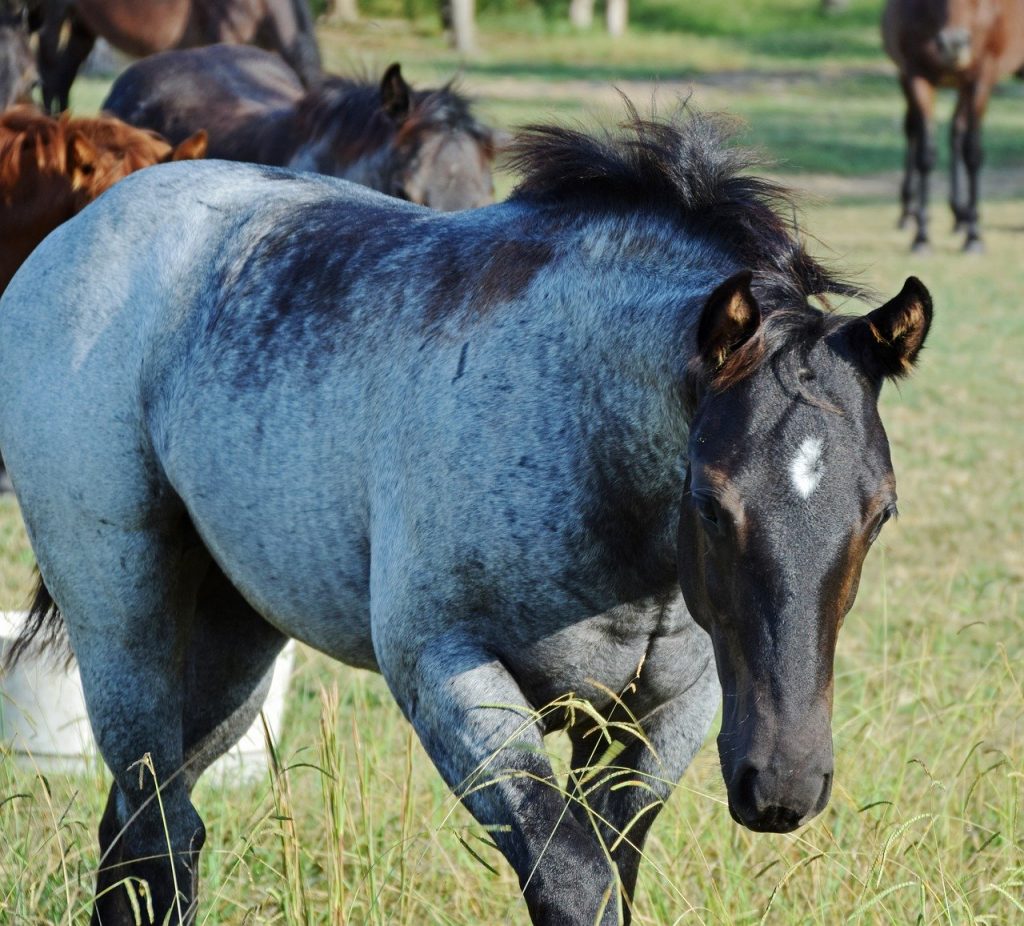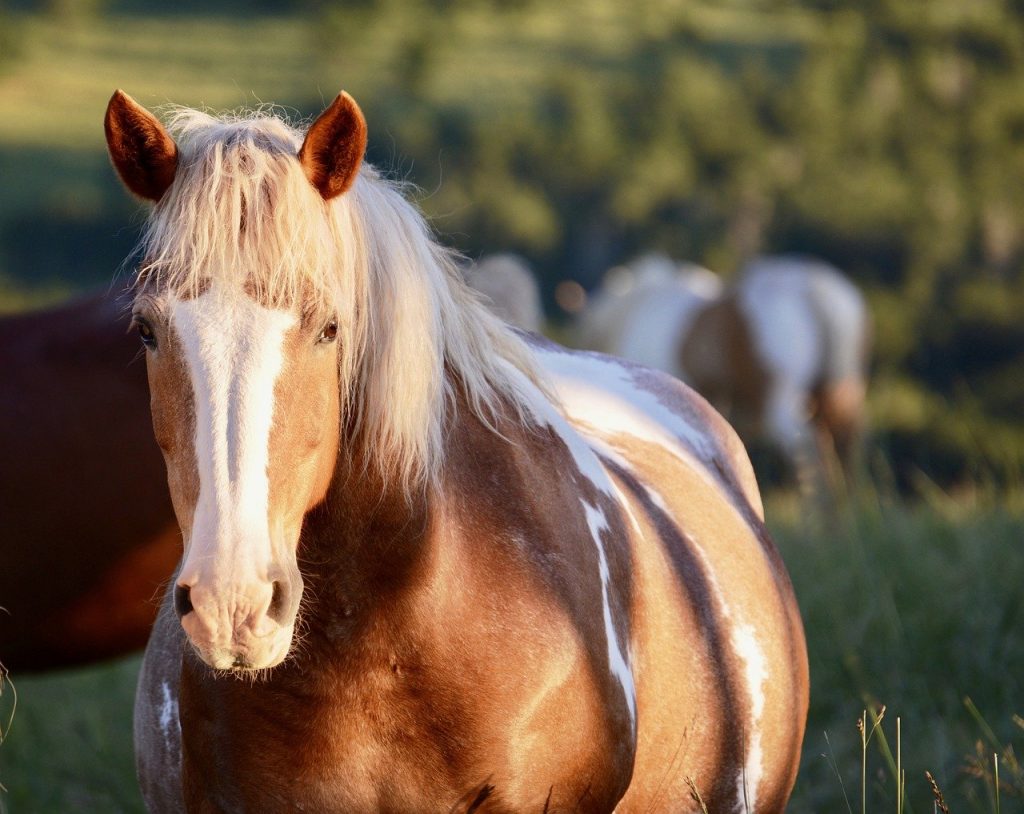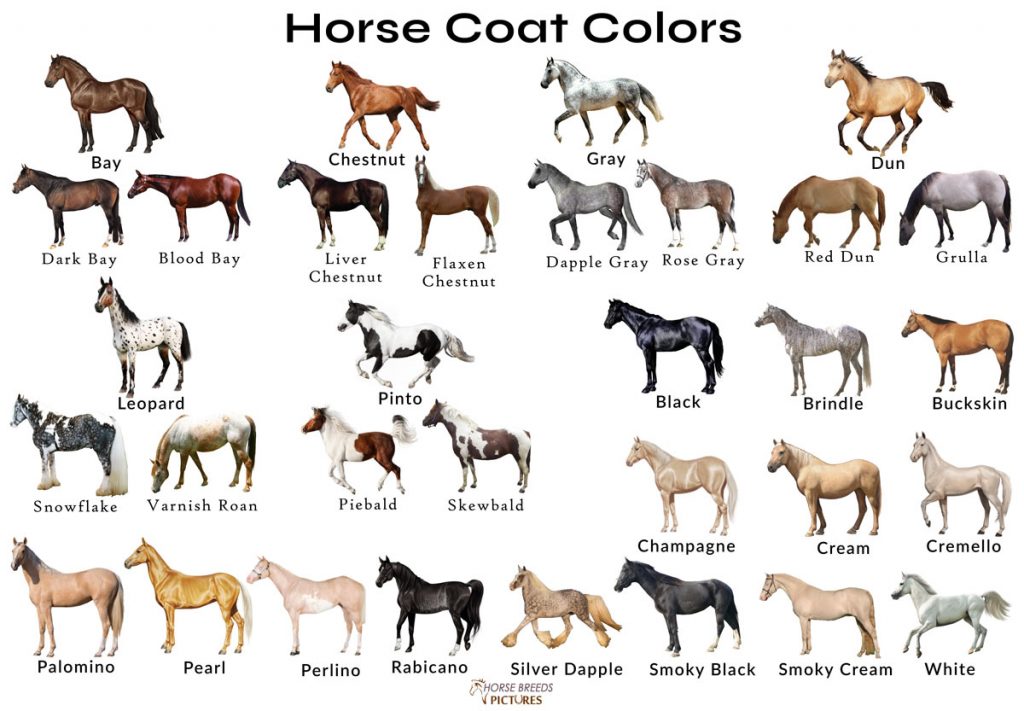
Horse Coat Colors are more than black, brown and white! EquiGroomer
horse color ©Rita_Kochmarjova/Shutterstock.com Perhaps the rarest horse color of all, the mushroom comes in a base color of chestnut or bay, with any skin color and dark eyes. The dilution gene has only been identified since 2014 but it results in a lightening of red tones in the horse's base coat, giving the horse an almost sepia appearance.

5 Beautiful Coat Colors in Horses Your Horse Farm
The two basic pigment colors of horse hairs are pheomelanin ("red") which produces a reddish brown color, and eumelanin, which produces black. These two hair pigment genes create two base colors: chestnut, which is fully red, and black, which is fully black. All other coat colors are created by additional genes that modify these two base colors.

The 10 Most Common Horse Colors
Horse Colors Chart The coat color of horses is determined by genetics, and changes in genes are responsible for different colors and variations. In addition to the colors listed above, there are several genetic modifiers, including the Agouti, Sooty, Pangaré, Flaxen, and Mushroom that affect equine coat colors.

5 Beautiful Coat Colors in Horses Your Horse Farm
The most common horse colors and patterns are bay, chestnut, gray, black, pinto, and dun. A horse's color is determined by many factors such as breed, genetics, age, and even season. Here is a helpful horse coat color chart: Credit: horsebreedspictures.com While many horses retain their original color at birth, this is not always the case.

Common Horse Coat Colors The Horse
Combinations of two pigments (or the lack of them)—red and black—result in four main coat colors: bay, black, chestnut, and gray. The rest of the colors are variations of these four and depend on how a gene is presented in a particular horse. Color Basics Chestnut A chestnut is a red horse.

Learning About Horses; Basic Horse Colors
These base colors are black, bay, brown, and chestnut. All else, including the rare ones, are due to cross-breeding. Some colors are more magnified while other colors are muted as recessive. In very rare circumstances, the absence of the four base colors may also happen as in the case of Classic Champagne and Perlino. Horse color chart

Part 3 Bay by MagicWindsStables on deviantART Horse color chart, Horse coloring, Horses
Horses real Us Over Us Horse Colors and Examples - And Ultimate Instruction Horses come in one wide variety of coat flag, ranging from saturated dark shades for mild dilutions, with either matt or glossy mantle and also many different patterns and markings scattered throughout the body.

15 Breathtaking Images of Paint Horses
Some of the colors are sandy bay, roan bay, blood bay, leopard bay, and wild bay. Besides, Arabian, Clydesdale, Standardbred, Thoroughbred, Andalusian horse, and Quarter Horse are some of the popular breeds of bay horses. 2. Black. The coat of a true black horse is entirely black, with no brown hairs.

Thoroughbred Colors What's Acceptable For Registration?
Horses can be found in a wide variety of different colors but the most common colors are black, bay, chestnut, sorrel, brown, dun, buckskin, gray, pinto (or Paint), spotted, roan, and palomino. One of the rarest coat colors though is white. How many horse colors are there?

The 10 Most Common Horse Colors
An appaloosa's white splash tends to gravitate toward its hindquarters. They can be a solid base color except for just a patch of spotted white on their butts. The appaloosa variations are named after the horse's base colors: bay, black, chestnut, palomino, buckskin, cremello, roan, gray, dun, and grulla.

Typical Horse Colorings a guide to horses and english riding
There are various common horse colors, such as black, bay, chestnut, sorrel, brown, dun, buckskin, gray, pinto (or Paint), spotted, roan, and palomino, with white being one of the rarest. These colors result from the combination of two basic pigment genes, pheomelanin (red) and eumelanin (black), that create the base colors chestnut and black.

The 10 Most Common Horse Colors
Horses' coats are made of two basic colors of hairs - red and black. What's known as red is actually a reddish-brown color. Bay is the name given to coats that contain a mixture of these two colors. Bay horses can have coats that look anything from a light reddish brown to a dark chocolate shade. In all cases, though, they have black "points".

Paint Horse Colors. Plus 6 Fun Facts and Pictures.
Each has its distinctive charm and allure. These primary colors are the foundation of most horse breeds, and their variations add to the rich tapestry of equine beauty. Horse coat colors are influenced by genetics, involving the extension gene (E) and the agouti (A) gene, which determine the distribution of black and red pigments in the horse's.

The 18 Most Common Horse Colors
Few primary horse colors are bay, chestnut, black and brown. The other colors are the variation of these four colors, and the absence of any colors is the white horse color. 1. Horse Colors: Bay

Are Palomino Horses A Breed, Expensive, Purebred, Or A Color
There are only four basic horse colors. Bay, brown, black and chestnut. Everything else is a variation on these four colors.or the absence of color.giving you white. The term ' markings ' refers to the white areas on a horse, usually on the face and legs. The term 'black points' is used to describe a black mane and tail with black legs.

Different Horse Colors with Pictures
From these, four fundamental colors emerge: black, gray, bay, and chestnut. The various shades we observe stem from the interplay—or occasionally, the absence—of these pigments, creating a wide spectrum of beautiful colors. Dive into the world of horse colors and patterns, where each shade and design tells a unique, genetic tale.